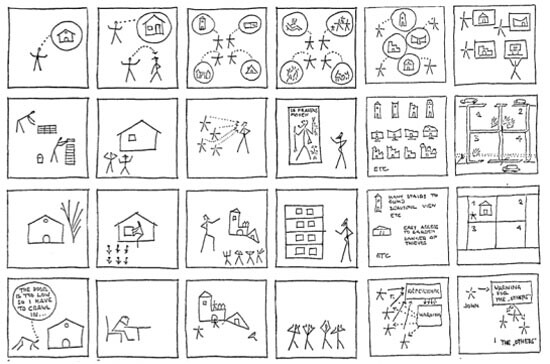I.
An “internet of things” describes a world embedded with so many digital devices that the space between them consists not of dark circuitry but rather the space of the city itself. The computer has escaped the box, and ordinary objects in space are carriers of digital signals. This capacity seems to finally fulfill the dream of artists and architects of the mid- to late twentieth century, among them Jack Burnham, Cedric Price, Archigram, and Christopher Alexander, who experimented with a cybernetic apparatus for modeling space. It might also be the practical answer to quests by Nicholas Negroponte’s Architecture Machine Group and architects exploring Artificial Intelligence, who rehearse interplay between digital machines and the space of the city and the body—reciprocal modeling that enhances the capacities of each. On the contemporary scene, manifestoes like Carlo Ratti’s “Open Source Architecture” imagine that in digitized space—this web of things—architecture can be constructed in much the same way that a wiki is assembled.
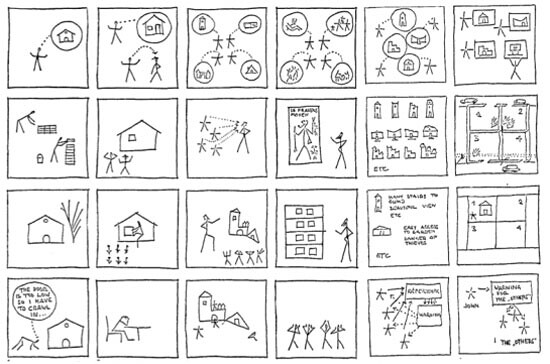

As art and architecture adopt technologies to embrace a new imaginary or model a new relationship, digital technologies often become an essential prosthetic for an idea about form-making. Yet these nourishing and exciting projects also perhaps prematurely stop, short of, or even foreclose on, a much more expansive investigation. Even when resisting the vampiric modernist impulse to declare a new regime, these projects may be drawn into a cul-du-sac; their production of artifacts risks being yet another anecdotal, even marginal, expression in a succession of ideas.
A non-modern question—the artifacts of which have always been with us, the boundaries of which include but exceed all of the above experiments, and the answer to which we already know—is how space, without digital or media enhancement, is itself information.1
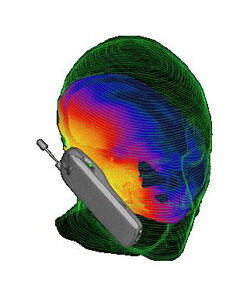

We are not accustomed to the idea that non-human, inanimate objects possess agency and activity, just as we are not accustomed to the idea that they can carry information unless they are endowed with code/text-based information technologies. While accepting that a technology like mobile telephony has become the world’s largest shared platform for information exchange, we are perhaps less accustomed to the idea of space as a technology or medium of information—undeclared information that is not parsed as text or code. Indeed, the more ubiquitous code/text-based information devices become, the harder it is to see spatial technologies and networks that are independent of the digital. Few would look at a concrete highway system or an electrical grid and perceive agency in their static arrangement. Agency might only be ascribed to the moving cars or the electrical current. Spaces and urban arrangements are usually treated as collections of objects or volumes, not as actors. Yet the organization itself is active. It is doing something, and changes in the organization constitute information. Even so, the idea that information is carried in activity, or what we might call active form, must still struggle against many powerful habits of mind.


II.
The projects of Cedric Price and Christopher Alexander are on the threshold of designing an architecture that has become information.2 It is instructive then to examine why their practices are sometimes relegated to historical oddities or novelties. Price, a London architect active from the 1960s to the early years of the twenty-first century, artfully prefigures the discussion of active form and spatial software or protocol. Fascinated by networks, infrastructure, and the movement of populations, Price puzzled over variable cocktails of skeletal authorship and improvisation. He designed spatial repertoires, building details, infrastructural networks, games, and toys. His constructions were essentially choreographies of human and non-human actors unfolding over time. Price steered his work away from objects, signature buildings, and monuments toward encounter and performance. He found “delight in the unknown.” He was interested in “doing less” and wrote that “calculated indolence on the part of the architect … produces great work by others.”3 Price chose to practice like a performer, noting that the architect was usually a “poor performer,” “consistently bad.”4 Like a good performer, he focused on interplay. He was relaxed within the power of object form and active form and enjoyed how they worked together to create their own epidemics in the environment. He wrote,
I consider it unlikely that architecture and planning will match the contribution HushPuppies have made to society today, let alone approach that of the transistor or loop, until a total reappraisal of its particular expertise is self-imposed, or inflicted from outside.
Designers and architects would be better employed in devising new languages of comparison from computers, than in using them to confirm the obvious. I would like to suggest that the socio-environmental factors that would stop lonely old people from going mad could be utilized in determining the economic viability of particular intervals of rental vacancy within a newly completed office block—just a suggestion.5
At their best, Price’s schemes were time-released, located beyond a single site or stage, and poised to upset holistic cybernetic dreams. However, some of Price’s projects also aspired to the predictability and predetermination of the holistic scripts of cybernetics, with its quest for homeostasis. For instance, Potteries Thinkbelt and Fun Palace, collaborations with theater director Joan Littlewood and cybernetician Gordon Pask, were theatrical and educational spaces proposed for London but never built. Price, interested in transportation landscapes, incorporated equipment used in container shipping to choreograph the programmatic components to be kinetic, interactive, and responsive to the user. His Generator project, a landscape with minimal construction planned for a wooded area in Florida, was the spatial reflection of a computer game that assigned a repertoire of moves to various players and objects in the landscape. The degree to which these projects were choreographed as tightly integrated, even prescriptive, cybernetic science perhaps foreclosed on their experimentation.
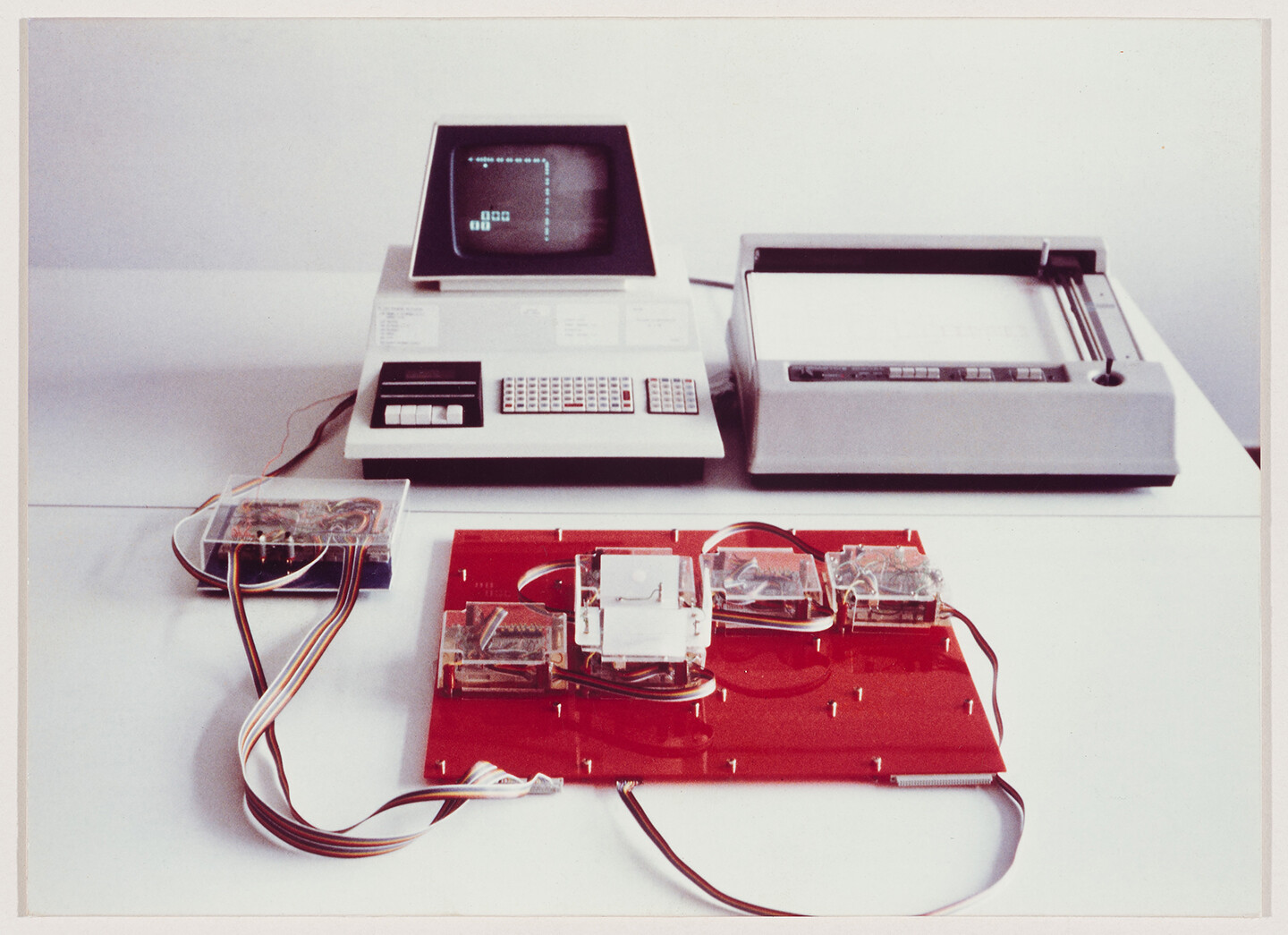

Christopher Alexander’s direct application of set theory and network topology to urban morphology similarly illustrates the perils of codification and predetermination. Trained in physics, mathematics, computer science, information science, and architecture, Alexander’s work engages both object form and active form, as well as human and non-human actors. But using these techniques he constructs a science that forecloses on the very territory about which he speculates. In his 1965 article “The City is not a Tree,” he critiqued what he deemed to be the infrastructural or organizational template of many settlements and cities. A “tree,” in Alexander’s parlance, is a branching structure in which sets are either completely disconnected from one another or entirely contained within one set without overlapping sets. The branches do not grow together but emanate separately from a single trunk. Alexander demonstrates that Greenbelt, Maryland, Levittown, the Greater London Plan, Brasilia, Kenzo Tange’s Tokyo Plan, Chandigarh, Hilberseimer’s settlement patterns, and other well-known plans are “trees.” He asserts that settlements in “traditional society” developed interconnections and overlaps that did not resemble an arborescent structure, primarily due to the activities of inhabitants rather than the authority and administration of planners. Authority always generates a tree and therefore, in his terms, an “artificial” city.6


Alexander observed activity in urban space as information. In “The City is not a Tree” he gave a now famous example:
For example, in Berkeley at the corner of Hearst and Euclid, there is a drugstore, and outside the drugstore a traffic light. In the entrance to the drugstore there is a newsrack where the day’s papers are displayed. When the light is red, people who are waiting to cross the street stand idly by the light; and since they have nothing to do, they look at the papers displayed on the newsrack which they can see from where they stand. Some of them just read the headlines, others actually buy a paper while they wait.
This effect makes the newsrack and the traffic light interactive; the newsrack, the newspapers on it, the money going from people’s pockets to the dime slot, the people who stop at the light and read papers, the traffic light, the electric impulses which make the lights change, and the sidewalk which the people stand on form a system—they all work together.7
For Alexander, this urban system is like a semi-lattice in set theory. Two sets of objects and activities overlap at the newsrack. If diagrammed like a branching structure, the branches overlap and connect. The semi-lattice diagrams “natural” cities like Siena, Liverpool, Kyoto, or Manhattan. The tree segregates urban functions in an organization, while the semi-lattice offers “ambiguity” and “multiplicity” in a structure that is “thick, tougher, more subtle, and more complex.” On the one hand, Alexander expands the repertoire of design to include activity. But on the other, he quickly codifies and taxonomizes that activity. He mimics the object of this own critique by reforming the artificial with a “natural” corrective—instead of the tree, the semi-lattice becomes the placeholder. Despite his attempt to incorporate active form and information, Alexander only creates another immobilized form.8
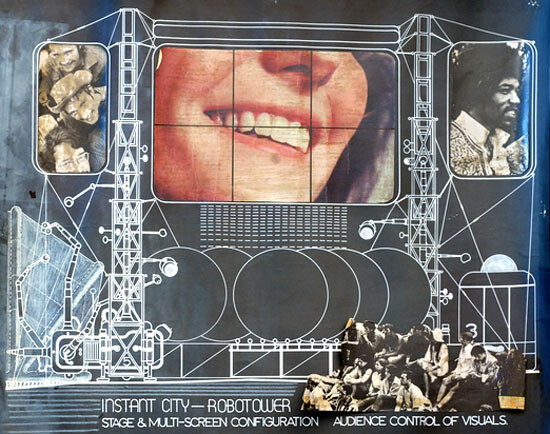

IV.
Far from what may be considered the more obscure experiments of architects, the most consequential architecture in the world has already become information. Still somewhat obscure only because of its overwhelming ubiquity, space is itself an infrastructural technology that is mobile and monetized, traveling around the world as a repeatable phenomenon. Compared to the relative trickle of space made by special practitioners, these technologies produce a fire hose blast. The most radical changes to the globalizing world are being written in the protocols or softwares of infrastructural space.
Avoiding some modern habits that shape the projects of Price and Alexander, another kind of artistic endeavor, not reliant on either the digital prosthetic or the predictable cybernetic system, can address this new global infrastructure space. This is not a new but an extra art and mode of making in which the action is the form. Action is not necessarily movement but is rather embodied in relationship, relative position and potential in organizations. Action is immanent in the disposition of an organization. There is no prescription for architecture, only a technique for performing it. Active forms design a disposition—a set of capacities for shaping space over time. Active forms are forms for handling forms.
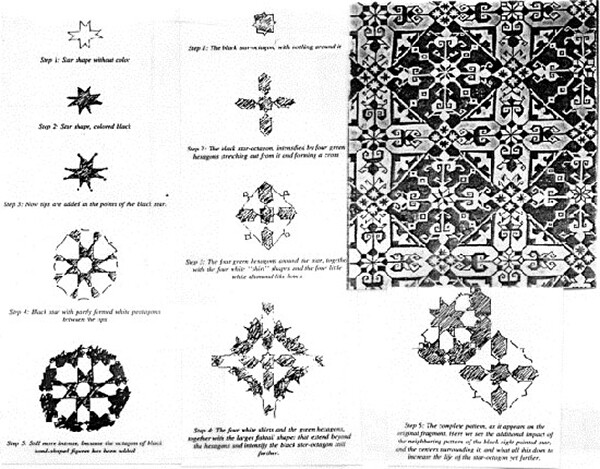

The shift from nominative to active that requires so much ideation and analysis in some schools of thought, such as design, is completely ordinary and natural in other disciplines, such as theater. As Price recognized, an aesthetic training in this extra art might resemble that of theater. It requires no special technological apparatus. The construction of action is the theater performer’s stock in trade. An actor adheres to a script but the scripted words are regarded only as traces or artifacts that hint at underlying action. A scene is a string of actions that carry meaning. Actors rarely deal with nominative or descriptive expressions—states of being or mood. One cannot, for instance, play “being a mother.” Attempting to do so leads to what is known in the theater as “indicating.” As Deleuze has written, “mediocre actresses must weep in order to signify grief.”9 In the theater, infinitive expressions, not representations, are the currency. The director asks the actor, “What are you doing?” It is generally agreed that leading with action or letting a vivid action carry the words rather than the other way around is a durable technique. Again, the action that leads the performance is not necessarily a movement or a gesture. It is rather the driving intent expressed as an active verb. An actor would not play “being a mother,” but rather “smothering a child.” Uncertainty, or the inability to fix meaning, does not paralyze the actor but rather allows more agility and interaction with other actors. Action is the bearer of information, consequence, change, or event. Action is the material used to make things and create meaning. The actor crafts variables and intentions to shape the information of the play.
While the model of a software as computer code is vivid, one can back out of that model and into a software made of active forms, deltas, and variables in space itself. For instance, Bruno Latour critiqued those architectural manipulations in computing or CAD environments “where objects move without being transformed” and are “geometrically manipulated or projected.” Stepping back from these practices, Latour writes that “with this kind of project, you do not move an inch out of the modernism framework. You are still focused on the object rather than the thing.” He has mused about an active software that would not simply reify form as geometry but would instead be intelligent enough to instantly pull up a web of cultural, political, and economic information, thus demonstrating the expanded reach of object form partnered with active form. But stepping back even further, one can only see this imagined software as an enhancement to Latour’s larger model of interplay in his actor-network theory, a theory that does not need software or special equipment to exist. The activity in a spatial environment is not reliant on the digital environment. It may be enhanced by a code/text-based software, but a spatial software or protocol can be any platform that establishes variables for space as information.10
Dispositional expressions and active forms can be spatial softwares, protocols, or diagrams. A diagram, as Deleuze and Guattari render the idea, is not a representational sketch of an single arrangement but rather an “abstract machine” that is generative of a “real that is yet to come.”11 Similarly, Deleuze discusses Foucault’s notions of “dispositif” and “social apparatus” as “lines of force,” trajectories or “names given to variables.”12 Gregory Bateson wrote that “the switch is the thing that is not except at the moments of its change of setting, and the concept ‘switch’ has thus a special relation to time. It is related to the notion ‘change’ rather than to the notion ‘object.’”13 Active forms in urban space can serve as expressions of variability and interdependence, like a calculus function or cosx—a software that facilitates relationships while not controlling every outcome. Cosx is an explicit expression and yet only manages a multiple set of values. Knowing all of those values is less important than understanding the disposition to form, when graphed, a particular curve.
This extra art is non-modern because active form does not need to kill object form to exist. There is no need for succession, segregation, and competition between these ideas, which already often coexist on a continuum. Object form can be resolutely disengaged from or, alternatively, positioned to become, active form, like a stone in the water. There is no necessity to create active form and no necessity to corral a fixed set of meanings under a new term.14 There is only the observation that there are modes of form-making that exceed object form in substantial ways—only the need to point to a project that offers additional artistic pleasures and political powers.
The extra art of active form and disposition rehearse an internet of things without the internet.
I borrow the expression “non-modern” from Bruno Latour. Bruno Latour, We Have Never Been Modern (Cambridge: Harvard University Press,1993), 48.
Bruno Latour, We Have Never Been Modern (Cambridge: Harvard University Press,1993), 48.
Cedric Price, Works II (London: Architectural Association, 1984), 18.
Cedric Price and HansUlrich Obrist, Re:CP (Birkhäuser Architecture, 1999), 64.
“Cedric Price Talks at the AA,” AA Files 19 (Spring 1990): 33
Christopher Alexander, “The City is not a Tree,” Architectural Forum, Vol. 122, No. 1 (April, 1965): 58–62 (Part I); and Vol. 122, No. 2 (May 1965): 58–62 (Part II).
Ibid.
Ibid.
Gilles Deleuze, Proust and Signs: The Complete Text, trans. Richard Howard (Minneapolis: University of Minnesota Press, 2000), 39.
“Interview with Bruno Latour: Decoding the Collective Experiment,” by María J. Prieto and Elise S. Youn, Agglutinations.com, July 05, 2004.(No longer available online.)
Gilles Deleuze, Foucault. translated by S. Hand. (Minneapolis: University of Minnesota Press, 1988), 37; and Gilles Deleuze and Felix Guattari, “On Several Regimes of Signs,” A Thousand Plateaus (Minneapolis: University of Minnesota Press, 1987), 141-, 142.
Gilles Deleuze, “What is Dispositif?,” Michel Foucault: Philosopher (New York: Routledge, 1991), 160, 166.
Gregory Bateson, “Criteria of Mental Process 1-4,” Mind and Nature: A Necessary Unity (New York: Dutton, 1979),”Criteria of Mental Process 1-4,” 109.
This argument is very careful to avoid modern pronoucements, preferring an inclusive position. For instance, Nicolas Bourriaud’s notion of “relational form” is sympathetic, as is his “altermodern” position. Still, this argument hopes to broaden the field in which it and similar notions can be applied. Nicolas Bourriaud, Relational Aesthetics (Paris: Les Presses du Réel, 2002).
This article is an adaptation of material from the forthcoming book Extrastatecraft: Global Infrastructure and Political Arts.
